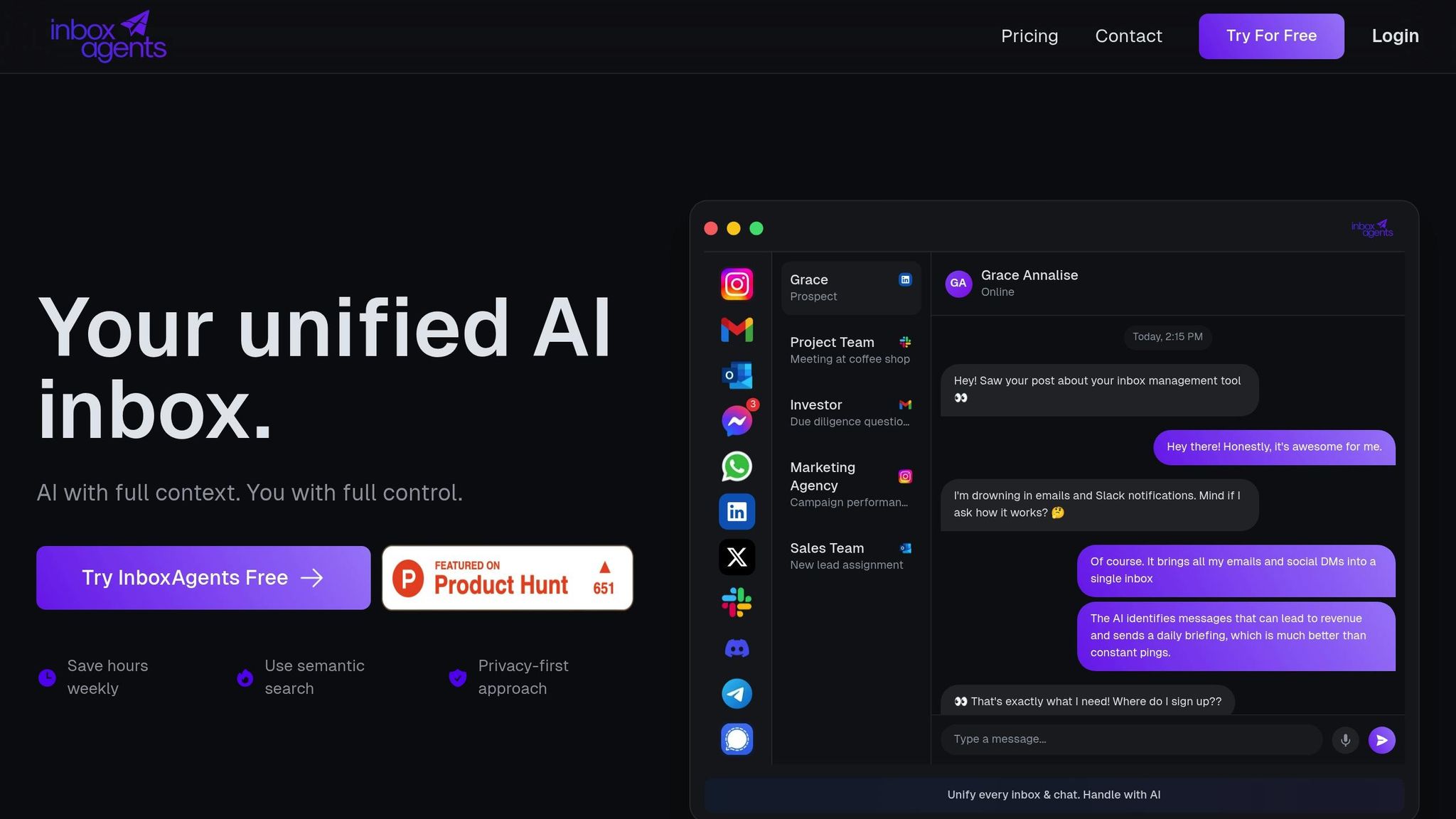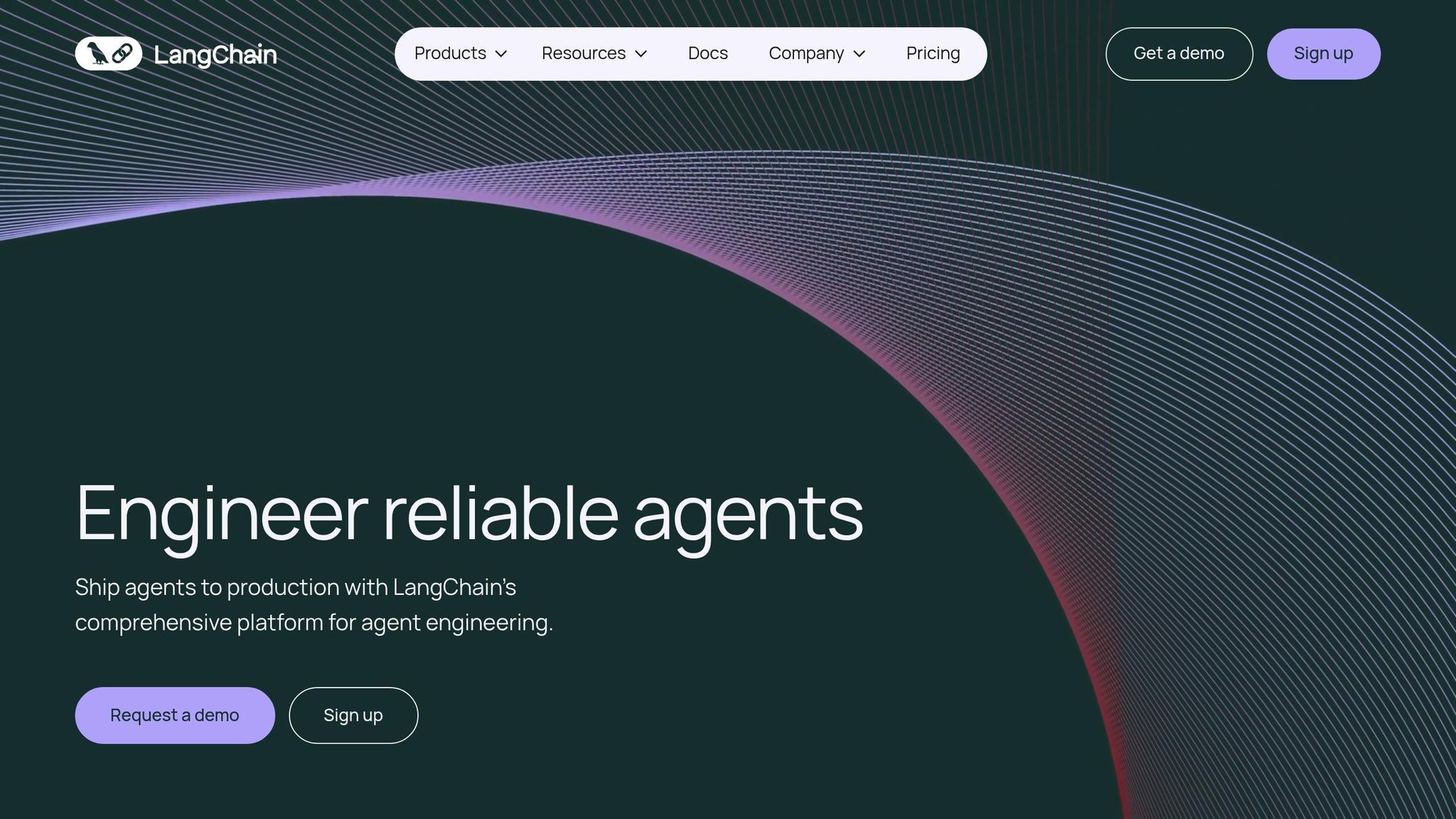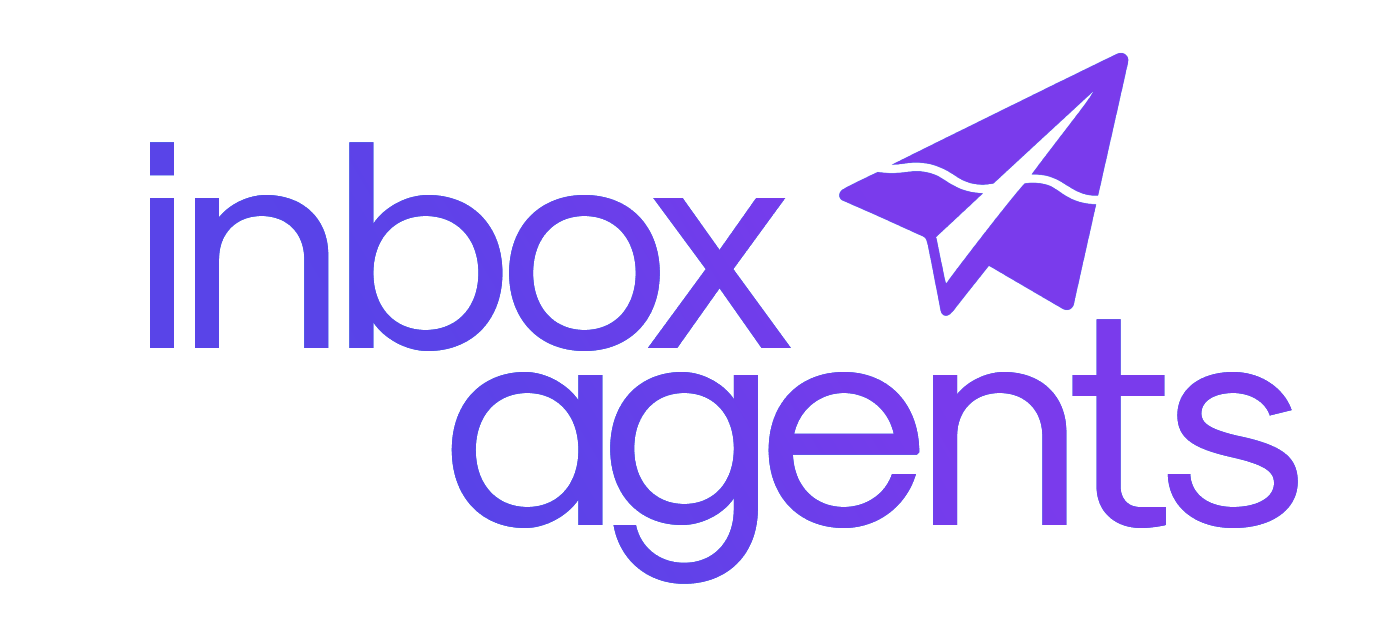
Scaling Intent Categorization with AI in the Cloud
Scaling intent categorization is crucial for managing high volumes of customer messages across platforms. Businesses face challenges like handling growing data, maintaining real-time processing, and overcoming technical limitations of older systems. Cloud-based AI solutions address these issues by offering dynamic scalability, cost efficiency, and advanced tools for accurate intent recognition.
Key takeaways:
- Challenges: Increased message volumes, complex intent taxonomies, and limitations of on-premises systems.
- Cloud Advantages: Elastic resource scaling, real-time analysis, automated updates, and cost-effective pay-as-you-go models.
- Tools Like Inbox Agents: Streamline communication by organizing messages, identifying priorities, and providing smart replies.
Switching to cloud-based AI ensures faster, more efficient intent categorization while reducing costs and improving customer experience.
Main Barriers to Scaling Intent Categorization Systems
Managing Growing Data Volumes and Categories
As businesses expand, the sheer volume of customer inquiries grows, introducing new challenges for intent categorization systems. With this growth comes the need for more training data and frequent model updates to handle the increasing complexity of customer interactions.
Modern deep learning models like BERT require massive amounts of annotated data and significant GPU power to function effectively. Adding even a single new category demands a substantial number of training examples to maintain accuracy. For instance, one company experienced this firsthand when it expanded its intent categories from 90 to 107 in Q2 2024.
But it’s not just about the data volume. Problems like insufficient labeled data and biases in datasets can lead to a noticeable drop in performance. On top of that, managing these systems manually becomes a daunting task. Traditional workflows depend on human experts to review, categorize, and validate new customer interactions - a process that quickly turns into a bottleneck as the number of categories grows.
These data-related hurdles often pave the way for even bigger technical challenges, especially in legacy systems.
Technical Bottlenecks in On-Premises Infrastructure
Scaling intent categorization systems on traditional on-premises infrastructure presents a host of challenges. Limited compute power and storage capacity make it difficult to process large datasets or retrain models often enough to keep them accurate. This is especially true for resource-intensive transformer-based models, which demand significant computational resources.
Unlike cloud-based solutions, on-premises systems lack the ability to dynamically allocate resources. When traffic spikes - like during product launches or customer service surges - these systems often struggle to keep up. This can result in delayed responses, leading to customer dissatisfaction during critical moments.
Integration is another major pain point. Connecting AI-powered intent categorization systems to older enterprise platforms often requires extensive IT resources and meticulous planning to ensure everything works smoothly. These complex integrations slow down workflows and make it harder to scale the system across an organization.
Then there’s the cost issue. On-premises setups require hefty upfront investments in hardware and infrastructure. Companies often overprovision to handle peak loads, tying up capital that could otherwise be used to adapt to shifting business needs. Beyond the hardware, ensuring real-time responsiveness is just as crucial - and just as challenging.
Need for Real-Time Processing and Flexibility
Real-time processing is no longer optional - it’s essential for businesses that want to stay competitive. Quickly identifying high-value opportunities can be the difference between closing a deal and losing it. But traditional systems often fall short when it comes to the low-latency requirements needed for immediate message analysis and routing.
Consider this: the average person receives over 121 messages daily across various platforms. For busy professionals, managing this constant flow of communication can take more than 3 hours a day. Without real-time processing, important messages can easily get buried, resulting in missed opportunities and slower response times. In fact, constant notifications can reduce focus by 31%, eating up 23% of a person’s productive hours.
Adding to the complexity is the need for continuous model updates. As user language evolves, keeping models accurate requires computationally demanding updates. And then there’s the challenge of unifying communication across multiple platforms. Processing messages from email, LinkedIn, Instagram, Discord, WhatsApp, and other channels in real time - while maintaining consistent categorization accuracy - requires advanced AI systems and robust infrastructure. Unfortunately, these demands often exceed the capabilities of traditional on-premises solutions.
As message volumes grow, many organizations find their intent categorization systems struggling to keep up. Accuracy drops, and the tools meant to streamline communication management end up undermining it instead.
How Cloud-Based AI Solutions Fix Scaling Issues
The Role of Cloud Infrastructure in Scaling
Cloud infrastructure has completely changed how scaling works, especially for tasks like intent categorization. Unlike traditional on-premises systems that demand costly hardware upgrades and long deployment times, cloud platforms offer a much more flexible approach. They allow for horizontal scaling (adding more servers) and vertical scaling (upgrading existing resources) whenever needed, without the usual delays or expenses.
This flexibility means systems can automatically ramp up computing power during busy times, like when customer inquiries spike, and scale back during slower periods. The payoff? Deployment cycles are up to 40% faster, and infrastructure costs drop by about 30% compared to older, on-premises setups.
Another big win is the pay-as-you-go pricing model, which eliminates the need to buy and maintain servers that often sit idle. Instead, businesses only pay for the resources they actually use. Managed services for storage, computing, and AI deployment also help cut down on administrative overhead.
Cloud platforms further simplify things by streamlining model deployment and updates. With tools like Azure AI or AWS SageMaker, organizations can automate tasks like retraining and deploying machine learning models. This ensures that intent categorization systems stay up-to-date as user behavior changes over time. By providing a scalable and efficient foundation, cloud infrastructure enables businesses to adopt more advanced AI techniques, improving their ability to classify and understand user intent.
Advanced AI Methods for Intent Categorization
Cloud platforms open the door to advanced AI methods that are often too resource-intensive or expensive to run on traditional systems. Techniques like retrieval-augmented generation (RAG) and large language models (LLMs) have become the go-to solutions for handling large-scale intent categorization. These methods excel at managing diverse and constantly evolving user queries with high accuracy.
RAG, for instance, combines retrieving relevant data with generative models to boost classification performance. This is especially useful when dealing with a wide range of intents that change frequently. By leveraging the computational power of cloud-based systems, these AI approaches can efficiently process dynamic user queries. For example, they can recognize that phrases like "I need help with my bill" and "Can someone explain these charges?" reflect the same underlying intent.
The shift toward transformer-based and LLM-driven intent classification highlights the growing reliance on cloud platforms. Over 70% of enterprises using conversational AI at scale now depend on cloud-based solutions for intent categorization. These advanced models support real-time analysis, which is essential for managing high volumes of communication effectively.
Real-Time Message Analysis and Continuous Learning
Cloud-based AI systems shine when it comes to real-time message analysis. They use distributed processing, low-latency data pipelines, and scalable inference services to process incoming messages instantly. This allows them to classify intent and trigger automated responses or routing decisions without any delay.
Take the example of busy professionals juggling countless messages across platforms like email, LinkedIn, WhatsApp, and more. Cloud-based tools, such as Inbox Agents, consolidate all these messages into a single interface. They analyze each one in real time, identifying its intent and priority. Instead of bombarding users with endless notifications, these systems filter out noise and highlight what truly matters. Users receive focused daily updates, helping them stay productive and avoid the distractions of managing multiple communication channels.
Another standout feature of cloud-based AI is continuous learning. Unlike static on-premises systems, these platforms automatically gather new conversation data, spot misclassifications or emerging intents, and update their models - all without requiring manual input. With ample storage and computational resources, cloud systems can retrain models regularly, ensuring they keep up with changes in language and user behavior.
Over time, these systems also adapt to individual users. They learn unique communication styles, preferred terminology, tone, and relationship dynamics. Within just one to two weeks of consistent use, they can achieve impressive accuracy levels. This ability to adapt makes intent categorization more precise, allowing businesses to organize messages automatically and deliver tailored responses that meet specific needs.
Inbox Agents: AI-Powered Inbox Management at Scale

Key Features of Inbox Agents
Inbox Agents takes the chaos out of managing high-volume communications by bringing messages from multiple channels into one smart, unified platform. Its AI-driven semantic triage ensures you focus on what matters most by pinpointing critical messages and filtering out unnecessary noise.
The platform organizes your messages into intuitive smart folders like "Revenue Opportunities", "Investor Updates", "Partnership Leads", and "Routine Messages." This way, you won’t miss important updates. A standout feature, Dollarbox, identifies messages with revenue potential, ensuring high-value opportunities don’t slip through the cracks. On top of that, daily briefings summarize key messages - especially those tied to revenue - so you can stay informed without constant interruptions.
Inbox Agents also simplifies your workflow with smart replies and automated negotiation tools. These features draft responses and even negotiate meeting times, with user approval ensuring everything aligns with your standards. Within just a week or two, the system learns your communication style, delivering responses that feel natural and accurate. All these tools are built on a robust framework designed to handle high message volumes without compromising performance.
How Inbox Agents Handles High-Volume Conversations
To handle the demands of high-volume messaging, Inbox Agents relies on a cloud-native platform that processes and organizes dozens - or even hundreds - of messages daily across all connected channels. Unlike traditional systems that can bog down under heavy loads, this modern design ensures smooth performance without delays.
The platform’s real-time processing capabilities shine with features like instant voice transcription and AI-powered filtering. Its continuous learning mechanism keeps it ahead of the game, analyzing past interactions to adapt to new communication patterns automatically. And when it comes to security, Inbox Agents doesn’t cut corners. With enterprise-grade protections like end-to-end encryption and full compliance with GDPR and CCPA, your sensitive business communications are safe.
The benefits of AI-powered tools like Inbox Agents are hard to ignore. Businesses leveraging AI for intent classification in customer service have seen up to a 30% cut in response times, a 25% boost in customer satisfaction, and operational cost reductions ranging from 20–40% thanks to streamlined automation and efficiency.
sbb-itb-fd3217b
Intent Classification Using LangChain with Code Example | Text Classification Using #llm

Cloud-Based AI Solutions vs. On-Premises Systems
Choosing between cloud-based AI and on-premises systems for scaling intent categorization can have a major impact on your operations, especially when it comes to cost, speed, and scalability.
Cloud solutions are quick to deploy - often up and running within hours or days. On the other hand, on-premises systems can take weeks or even months to implement. Why? Because cloud-based AI operates on elastic infrastructure that automatically adjusts to demand. Let’s say your message volume jumps from a few dozen to hundreds of conversations daily - the cloud scales effortlessly. In contrast, on-premises systems are tied to their physical hardware, meaning scaling up requires time-consuming procurement, installation, and configuration.
The difference in performance is striking. A 2022 Forrester study revealed that organizations using cloud-based AI for intent categorization experienced a 35% boost in customer query resolution speed and cut operational costs by 25% compared to on-premises setups. These advantages extend beyond scalability, touching on deployment, maintenance, and cost efficiency.
Maintenance and Cost Considerations
Cloud providers handle the heavy lifting when it comes to maintenance. They take care of server updates, security patches, model improvements, and infrastructure monitoring. This allows your IT team to focus on more strategic goals. With on-premises systems, all maintenance tasks fall on your organization, often requiring dedicated staff with specialized skills.
Cost structures also differ significantly. Cloud-based AI typically operates on subscription or pay-as-you-go pricing, making it easier to align expenses with actual usage. For example, you might pay $0.10 per API call or $500 per month for a specific usage tier. On-premises systems, however, require substantial upfront investments - ranging from $50,000 to $500,000 or more - along with ongoing costs for hardware upkeep, software licenses, and energy consumption.
Comparison Table: Cloud-Based AI vs. On-Premises Systems
| Feature | Cloud-Based AI Solutions | On-Premises Systems |
|---|---|---|
| Scalability | Elastic scaling on demand | Limited by physical hardware |
| Deployment Speed | Hours to days | Weeks to months |
| Maintenance | Managed by service provider | Managed internally |
| Cost Structure | Subscription/pay-as-you-go | High upfront investment + ongoing costs |
| Flexibility | Easy feature additions, integrations | Manual updates and reconfigurations |
| Real-Time Analytics | Continuous updates | Often limited, with delays |
| Security & Compliance | Regularly updated frameworks | Custom implementation, slower updates |
| Model Updates | Automated, continuous | Manual, less frequent |
Flexibility and Real-Time Insights
One of the standout benefits of cloud-based systems is their ability to adapt quickly to changes. Whether it’s integrating with a new messaging platform or responding to shifts in customer behavior, cloud-based AI systems are built to adjust on the fly. This agility can reduce time-to-market by up to 60% compared to on-premises systems, thanks to faster provisioning and automated updates.
Real-time analytics is another area where cloud solutions shine. These platforms can process thousands of messages simultaneously, update intent models, and deliver actionable insights instantly. This constant learning cycle keeps the system improving daily - without requiring manual intervention. On-premises systems, by contrast, often rely on batch processing, which can introduce delays and reduce responsiveness.
Security and Compliance
For businesses in the U.S. navigating regulations like GDPR for international customers or CCPA for California residents, cloud providers offer a significant advantage. They typically provide robust compliance frameworks, conduct regular audits, and ensure their platforms meet the latest security standards. While on-premises systems offer direct control over data, maintaining compliance can demand significant internal resources and expertise.
Conclusion and Key Takeaways
Managing the surge in message volumes has made scaling intent categorization a top priority. To keep up, businesses must address technical challenges and rising data demands. Cloud-based AI solutions provide the speed, adaptability, and cost savings that older on-premises systems simply can't match.
Take LivePerson's Intent Manager as an example - it has analyzed over one billion conversations and automated 65% of intent recognition with minimal setup. This achievement proves that cloud-based AI can handle vast amounts of data while maintaining accuracy and efficiency. Such advancements are what make modern platforms thrive.
Another standout is Inbox Agents, which unifies messaging platforms and uses AI to deliver inbox summaries and smart replies. By processing hundreds of messages daily across multiple channels, it showcases how cloud infrastructure supports high scalability and operational efficiency.
These improvements are driven by cutting-edge AI techniques like retrieval-augmented generation and continuous learning. Unlike on-premises systems that rely on manual updates, cloud-based AI evolves automatically, ensuring it stays relevant and effective.
The takeaway is clear: businesses adopting cloud-based AI for intent categorization gain faster rollouts for new features, real-time analytics, automated upkeep, and the ability to scale resources as needed. With message volumes only set to increase, these benefits are becoming essential.
For companies still tied to on-premises systems, the time to act is now. Transitioning to cloud-based AI is no longer optional if staying ahead of customer expectations and operational challenges is the goal.
FAQs
How do cloud-based AI solutions improve the accuracy and efficiency of intent categorization compared to traditional systems?
Cloud-based AI tools take intent categorization to the next level by using powerful machine learning algorithms and the virtually limitless computing capacity of the cloud. Unlike traditional on-premises systems, these tools can handle massive datasets in real time, delivering faster and more precise results when identifying user intents.
What’s more, cloud platforms routinely update their AI models with the latest breakthroughs in natural language processing (NLP). This means businesses can tap into state-of-the-art technology without worrying about manual updates or investing in new hardware. The cloud’s scalability and flexibility also make it easy to handle increasing data loads and shifting business demands, providing a smooth, efficient way to manage intent categorization.
How does Inbox Agents help businesses efficiently manage large volumes of customer messages across multiple channels?
Inbox Agents streamlines the process of handling large volumes of customer messages by bringing all your communication channels together in one simple, user-friendly platform. No more wasting time jumping between apps or juggling multiple tools - it’s all in one place.
With its AI-driven features, you get access to automated inbox summaries, smart replies, negotiation handling, and personalized responses, helping you respond faster and maintain a polished, professional tone. Plus, tools like automated outreach and spam filtering keep your operations running smoothly, adapting seamlessly to meet your specific needs.
How do cloud-based AI systems use continuous learning to improve intent categorization, and how does this enhance the customer experience?
Cloud-based AI systems thrive on continuous learning, constantly analyzing fresh data to fine-tune how they interpret and categorize user intent. This ongoing process allows the AI to adapt to shifts in customer behavior, grasp subtle nuances in queries, and spot new trends as they emerge.
The payoff for businesses? Faster, more tailored interactions that leave customers feeling understood and valued. By minimizing errors and simplifying communication, these systems pave the way for smoother, more engaging customer experiences.
